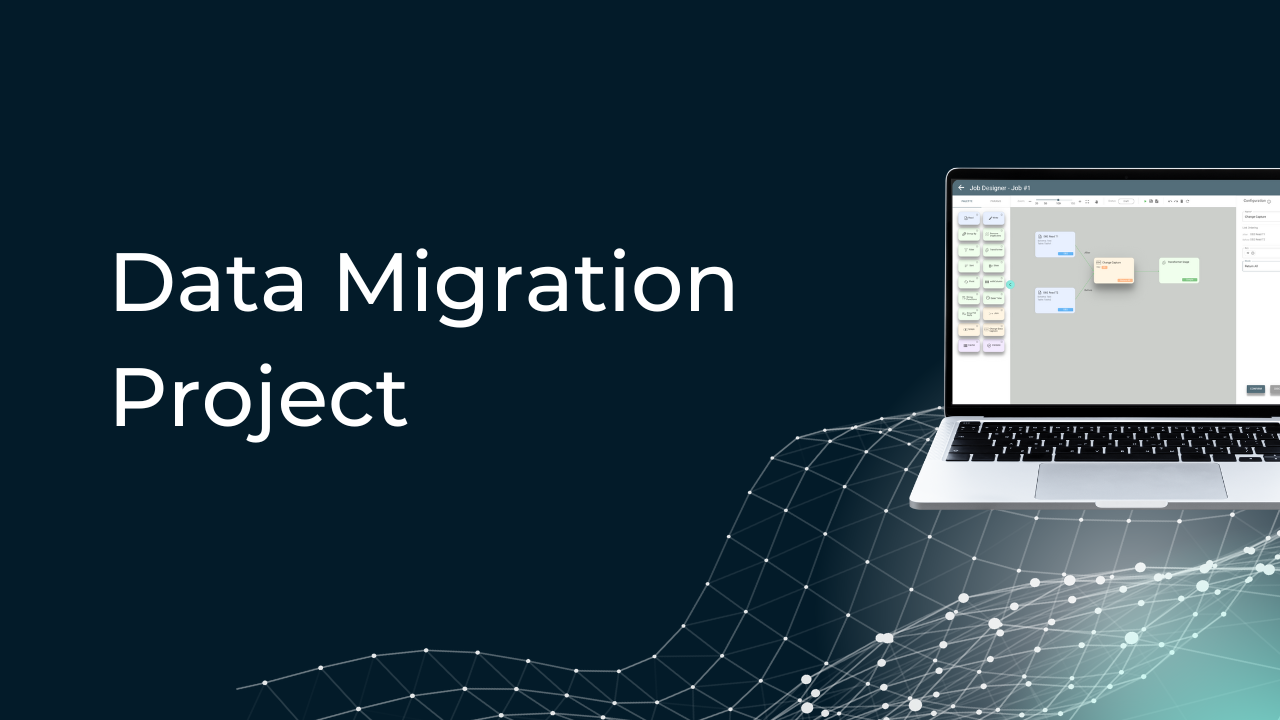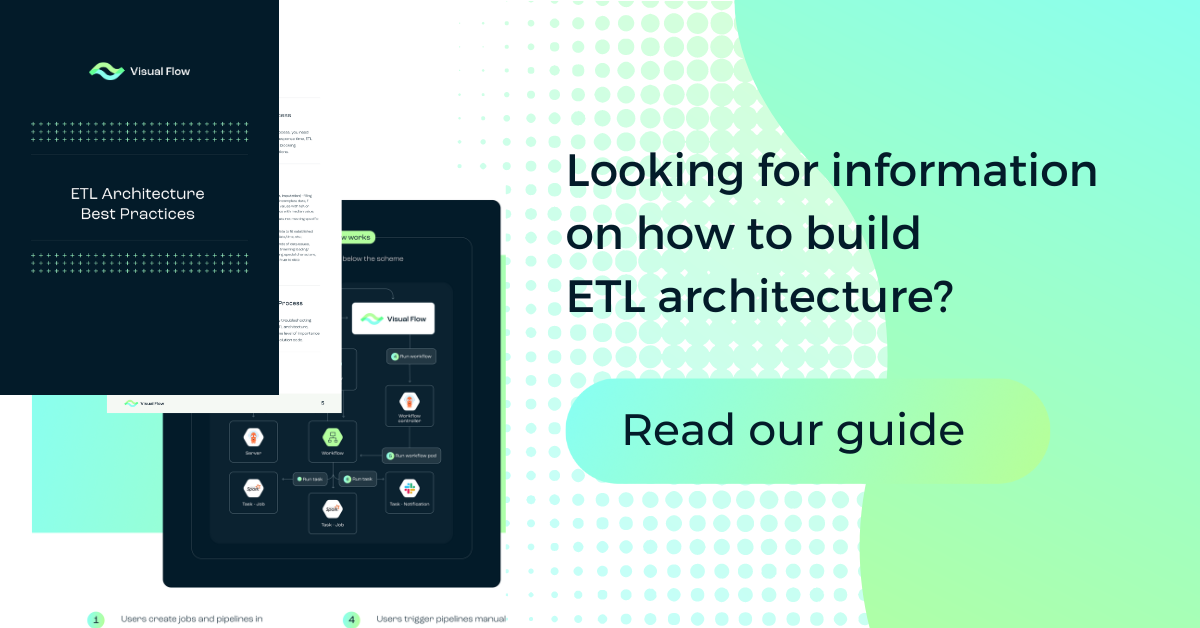Table of Content:
Table of Content:


Extract, Transform, Load (ETL) is a process when working with business data, which ensures that all the needed data is extracted from various sources, processed, and loaded into a new, centralized warehouse, data lake, external system. As for data modeling, it is responsible for defining data and dependencies between the data, or defining data entities, their attributes, and dependencies. As a result, it allows specialists to reduce the number of errors in software development and working with databases, as well as speed up the development and deployment processes. Below, we will talk about the modern ETL data modeling best practices.
What is ETL Data Modeling?
ETL data modeling is a visual representation of the data that is used and stored in the system, the relationships between the types of data used, how this data is grouped and organized, and the definition of their formats and attributes (of course, according to the “Extract, Transform, Load” scheme). Typically, the modeling process begins with an analysis of the business needs of a particular company.
As for best practices of ETL data model creation, they can be applied to improve security, performance in the reporting/presentation layer, and quality of the data design, as well as check for anomalies in the data and prepare it for further use in the created data models.
ETL Data Modeling Challenges
What are the challenges that ETL data modeling design can cope with?
Large amounts of unstructured data
Often, data modeling involves working with large amounts of unstructured data that IT engineers need to analyze. Modern ETL tools allow the company’s developer team to automate these tasks.
Defining dependencies and data structure
Modern data models have become more complex and are updated more frequently. Data modeling, with ETL tools, helps developers to determine dependencies and data structure with minimal delays.
Inability to focus on the company’s business processes
Thanks to ETL tools, IT professionals can automate the process of data modeling, spending only several minutes and not hours or even days as it was with manual work. They get the opportunity to focus on more interesting and extraordinary tasks than interacting with data.
11 ETL Data Modeling Best Practices
Now it’s time to find out which one of the best practices of designing an ETL data model you’d better apply in your specific case.
Grain
Let’s start our list of the best practices for creating an ETL data model with grain. To implement it, you will need to understand how detailed the data should be, and only after that can you start the modeling process. Typically, the smallest “grain” serves as the conventional data modeling unit.
Naming
Another practice often used in ETL data modeling is choosing a naming scheme. In particular, you may need data sources or business units so that you can separate data by purpose. Note that in the scheme you pick for describing the namespace relationship, there must be a similarity between the data source, business units, and abstraction layer.
Materialization
If you describe relationships when designing data tables, it is best to do all the necessary calculations beforehand. Thus, with this modeling concept, you will reduce the time required to process requests and minimize the likelihood of errors.
Permissions and governance
Also, before you start straightforward ETL data modeling, you should find out the existing requirements and legislation related to data management in your business niche. Specifically, we are talking about standards such as HIPAA, GDPR, etc.
Views
As for this one from the ETL data modeling practices, it will help you to view and use complex datasets that contain many tables, as well as implement row-level security if it’s not supported out of the box in the database. If you create model diagrams with only a specific set of tables in the model, this will provide a clearer and more understandable representation of the tables, as well as make it easier to work with data in general.
Enterprise Data Standards
Building a model according to enterprise data standards means representing all the data used in a particular organization in canonical form (with no derived data). It provides an in-depth view of enterprise data, regardless of the technologies used to manage it.
Dimensional Modeling (by Kimball)
Ralph Kimball’s model design methodology is called dimensional modeling. It focuses on a bottom-up approach, emphasizing the value of the data warehouse to the users.
As for dimensional data models, they are presented as the data structures available to the end-users in ETL flow to query and analyze the data. This flow ends up loading data into the target data models. Every such model should be built as a fact table with multiple dimension tables.
Data Partitioning
Partitioning is the division of stored database objects (such as tables, indexes, and materialized views) into separate parts with separate physical storage parameters.
The data is distributed across partitions by some rule, for example splitting by key where the key is the year. This practice is best suited for building predictive models when the data model requires sufficient storage capacity.
Data Replication
Replication is the process of copying data from one source to another (or many others) and vice versa. With replication, changes made to one copy of an object can be propagated to others. It can be complete or partial.
Being one of the ETL modeling best practices, it is pretty useful in terms of increasing data availability, as well as improving database performance. In particular, after its application, users will be able to share the same data without any difficulties.
Data backups
This practice provides fast, cost-effective backups (full, incremental, differential) that place business-critical data in one or more storage. At the same time, software engineers must set the frequency of copying current data (schedule) and determine the maximum limit for storage.
Blue/Green deployment
This tip closes our data model best practices list. Originally, a blue/green deployment implies the creation of two separate (but equal) environments. At the same time, the blue one has to run the existing version of your software, and the second one (green) has to run a new version.
Thanks to simplifying the rollback, this practice boosts application availability and reduces risks if a deployment fails. After successful testing of the green environment, the app traffic goes there, and the blue one gets cut off.
How Can We Help?
IBA Group is an outsourcing and software development company with 13 centers located in Eastern Europe and Asia. Its staff of 2,700+ IT experts is always ready to work on both local and outsourced projects.
As for IBA Group’s expertise, it starts from well-known IT niches and ends on the hottest IT market trends such as machine learning and artificial intelligence, computer vision, data science, data engineering, the Internet of things, robotic process automation, blockchain, digital twins, industry 4.0, etc. At present, the company has successfully completed 2000+ projects.
During the years of the company’s existence, it provided its software development services to IBM, Fujitsu, Lenovo, Panasonic, Coca-Cola, and other world-renowned brands. Moreover, currently, IBA Group is a trusted partner of such digital giants as Microsoft, SAP, Red Hat, Salesforce, etc.
If you are looking for a company that will implement your business idea on the digital plane, you’re in the right place! If you would like to discuss the details of your project with us, just send an e-mail or call us.
Conclusion
We hope you now know how to cope with ETL data challenges and which ETL pipeline modeling best practice to choose in your case. If you need more help from high-qualified data modelers, please contact us.
FAQ
Data modeling analyzes data objects and figures out the relationships between them. It generates a theoretical representation of data objects — vendors or customers in SaaS databases and how to store them in a system, defining the rules for the relationship between tables.
The best practices for ETL data modeling are grain, naming, materialization, as well as permissions, and governance. You may also find useful related methods such as Views, Enterprise Data Standards, Dimensional Modeling, Data Partitioning, Data Replication, Data Backups, and Blue/Green Deployment.
To choose the best practice of ETL data modeling, you need to determine what type of data you will be working with, what the relationships between these data should be, and how this data will then be used.
Contact us































































